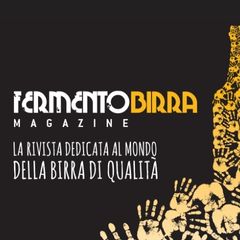A letter from Belgium: The beer of the missed chance
Scant months ago, a beginning fellow-beertaster mentioned having drunk a beer he called “Dikkenek Grand Cru”. To be honest, I was sceptic about his find. “Dikkenek”, now, is a name I know. It had been around for the longest time – nearly as long as I’ve been sampling – but in the last 4, 5 years, all had become quiet around it, and I couldn’t recall having seen it during that period.
I ought to have been less suspicious. Whereas the addition “Grand Cru” had me imagining rather some old bottle with a half-decayed label, found by this vigorous young man, it proved rather to be the herald of a replacing, a repositioning in the niche market of a former beer into a higher, à la mode gastronomic environment.
I found the beer myself short time later, in a famous Brussels’ pub. And, lo and behold, the first thing that struck me was the name of the brewery, as this was definitely different from those that I remembered. On the other hand, the neck-label mentioned, as had been the case before, a firm responsible for the commission. Steps & Co., Hasselt. Not that I remembered that specific firm, but Hasselt was right. So, Dikkenek had made a return, under a revamped name. Setting out to sample it, I was struck by a pretty spicy nose and taste. And yet, I felt let down. Not by spicyness in itself – but it was the wrong kind, in my idea. Let me try to present my case.
As I verified on a pretty glossy website, the first brewery ever to brew this beer was indeed, as I remembered, Brewery Martens in Bocholt. Now, “Dikkenek”, translates into “thick neck”. That is a common Flemish moniker for people thinking the earth of themselves, mostly more than necessary. And as such, this became a known nickname for the inhabitants of this rather provincial city, the ‘capital’ of the Belgian province of Limburg.
Thé drink of Hasselt, as you might know, is jenever, the Flemish equivalent of gin, vodka, e tutti quanti. The name for this drink, gave the name to a plant, whose berries are often used to flavour jenever: juniper, Juniperus communis. So, it was not really a surprise that one old recipe yielded a beer, flavoured with the same berries. And, as it happens, that was what the power of the first brew made: a very willed flavour of juniper. Now, I hear you saying: “But isn’t it a fact, that the masterful use of herbs shows itself, when their flavours are NOT obvious, but blend together harmoniously?”. And I will concede that, as a general rule, that is correct.
But it was different in this beer I remembered. The junipertaste used to be powerful, and exactly that made the beer unique, a refreshing novelty in a pretty bland landscape of new beers in those days. It seems not everybody agreed. As I read on the website, in fact, the people responsible for the idea, one Erik Horrix, and Steve Stevaert – now Governor of the province! – found the beer “undrinkable”… They must be joking, no? Anyway, they went elsewhere, and found a brewery, then still known as De Smedt in Opwijk, to brew the beer for them, this time top-fermenting. I will never forget the first time that I had that version. Such a sad loss; yet another nondescript beer, quite in the line of the other products of this brewery. But it seemed to satisfy the customers of Steve Stevaerts’ famous pubs.
Yet, as I read their website, the beer didn’t sell enough, according to some people. The fact that multinational ogre Heineken took over De Smedt, rebaptized the old brewery BDS Affligem, won’t be totally unlinked either, one supposes. For a few years, this beer was not seen, as I told you above. And now, Erik Horrix had the great idea to turn to a small local brewer with a big reputation, Marc Limet from the Kerkom brewery. Every beertaster with his heart in the right place, ought to have jumped for joy for this turn of events. As we read on in the website, they did use juniperberries for the recipe. Marc ought to have made a winner, then.
Well, I can’t say so. Don’t get me wrong, this is nowhere a bad beer. The fruity nose reminds me of a rather unripe pomegranate, with pepper, coriander and some barkspice thrown into it. The taste is an outspoken flavour of hard spices, woody, and pretty bitter. But I still miss my junipers… Call me difficult, if you wish, but I am thinking of a missed opportunity, here. The website is clear: the Dikkenek Nouveau is meant as a wine-like beer, accompanying culinary masterpieces in winelike glasses.
I haven’t tried it that way, maybe I should. But in the end, to me a beer is something I sip in the pub, enjoying the company of my friends.
Assessing it on its own merits.
Joris Pattyn




